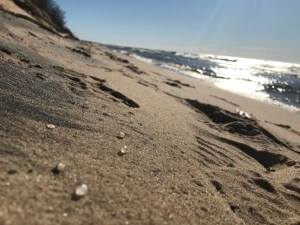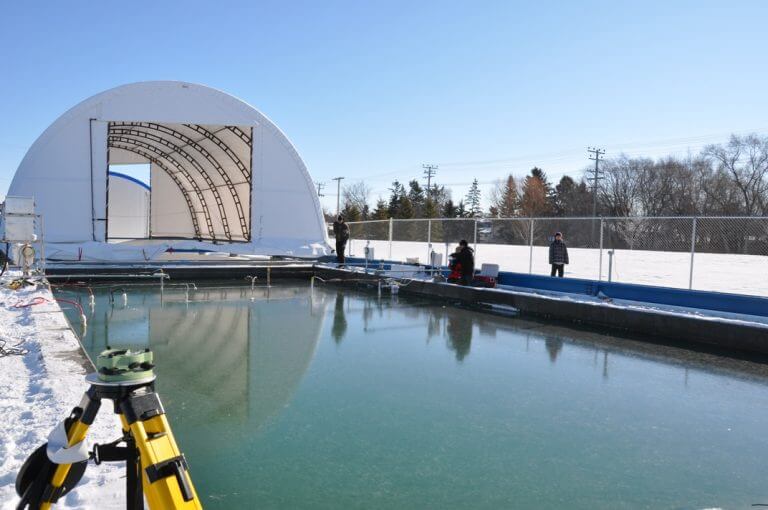
Post-Menopausal Migraines: Is There Relief?
It’s just past midnight, and I am slumped in the corner of a Toronto emergency department, hood pulled tight against the searing pain of overhead lights. I am, however, unprotected from noise. I cringe weakly each time nurses call a patient or the doors squeak open. It’s the fifth day of a migraine from hell, and it’s the first time I’ve been desperate enough to go to a hospital.
... read more

The Future of Aging According to 11 Canadian Experts
What kinds of exercise can help us age well? Does ethnicity play a role in how we age? How are Canadians dealing with aging and sex? These are important questions. The older cohort – the baby boomers and gen-Xers – represent nearly 45 per cent of Canada’s population, or 16,753,198 people.
... read more

On Newsstands Now: Zoomer Asks Canadian Experts to Share Their Latest Research Into Healthy Aging
In our March/April issue, top Canadian experts on aging weigh in on what the last 10 years have taught them and what the decade ahead might reveal. From genetics and cognition to social life and exercise, they share the developments that most excite
... read more

Chemical Impact: Microplastic pollution more complex than we think, says new research
Microplastics act like a chemical sponge, soaking up contaminants such as persistent organic pollutants and heavy metals. Those chemicals, in turn, appear to be causing deformities in larval fish.
... read more

Salt Levels: The effects of wintertime de-icing linger in Toronto-area rivers in the summer
A study found high enough amounts of chloride in four Greater Toronto Area rivers to put at least two-thirds of aquatic life at risk during early stages of their development.
... read more

Weed in the Water: How does cannabis use affect our freshwater ecosystems?
How does cannabis use affect our freshwater ecosystems? A group of researchers in a remote region of Ontario aims to find out how marijuana impacts water systems and what the implications are for the Great Lakes.
... read more

Angels to the rescue: Competition rewards innovators
As COVID-19 spread across the world early this year, Drs. Darren Yuen and Kieran McIntyre watched with mounting concern as reports out of China showed lung scarring and lingering breathing problems in supposedly recovered patients. The doctors, who work at St. Michael’s Hospital
... read more

Preventing a second wave is dirty work: COVID and wastewater
As Canadians take their first tentative steps out of lockdown, a group of researchers is scanning the bowels of our cities and towns for signs of potential flare-ups. Less than four per cent of our population has been tested for the coronavirus and epidemiologists say we don’t truly know how
... read more

Bored? Then pay attention to this research
Mental health professionals are sounding alarms over pandemic-related depression and anxiety. But some experts say there is another emotion we need to take just as seriously – boredom. While some of us are run off our feet (hello frontline workers), others are stuck at home with little more than sourdough to occupy our days. “People trivialize boredom,” says James Danckert
... read more

Simplifying the sweet science of chocolate making
Little-known fact: the things we like about chocolate – its creamy smooth texture and how it melts in our mouths – are thanks to the crystal structure of cocoa butter. Now University of Guelph researchers have found a way to create that perfect crystal structure while simplifying the fussy tempering process.
... read more

Alien landscapes and swimming pool science
Feiyue Wang, MCIC vividly recalls the first time a Twin Otter airplane neatly deposited him on the Arctic sea ice next to the Amundsen, Canada’s research icebreaker. It was 2008 and Wang – an experienced aquatic chemist used to working with flowing water – looked out the window and felt suddenly humble. He saw a still and frigid landscape, both beguiling and utterly alien.
... read more

Mapping metals in feathers
Like the proverbial canary in a coal mine, birds of all kind can act as sentinels for toxic metals in the environment. Now agricultural and environmental scientists are discovering that birds – or more accurately their feathers – can reveal contamination at very low levels, giving us an even more sensitive monitoring tool. Researchers have long known that like hair in humans, feathers can act as a sink for chemicals in the body.
... read more

Canada’s ‘brain gain’
Harvard chemist Alán Aspuru-Guzik has spent nearly half his life—20 years—in the U.S. He is sad to leave but feels he must. "The political dialogue is broken,” says Aspuru-Guzik, who was born in the U.S. and raised in Mexico. “People are not talking to each other; they are shouting at each other. I don’t want my kids to grow up in that kind of country.” So when Canada came knocking with a Canada 150 Research Chair
... read more

Meet B. Mario Pinto
B. Mario Pinto is a fourth-generation chemist who learned to savor the job only after a series of Goldilocks-like experiments with other disciplines. The man who would become president of the Natural Sciences & Engineering Research Council of Canada (NSERC) began his undergraduate degree in math and computing. “It was the early ’70s, and I realized it meant I would be working alone,” recalls Pinto, 63.
... read more

Caribou on the brink
The story of caribou is the story of us. Some 35,000 years ago, as early modern humans struggled to eke out an existence in Europe, it was reindeer—as caribou are known there—that sustained us. Archeological digs show refuse heaps dating from that time made up almost entirely of reindeer bones. Between 12,000 and 17,000 years ago, caribou was such an important prey animal in Europe that
... read more

Marsh on the move
Biologist Matt Whitbeck leans against the rail of a wooden platform and looks across the seemingly immutable marshlands of Maryland’s Blackwater National Wildlife Refuge. The waist-high grasses beneath his feet are rooted in a four-meter layer of peat and silt built up over nine centuries. Monarch butterflies fly in lazy circles. A stand of pines rises in the distance.
... read more






